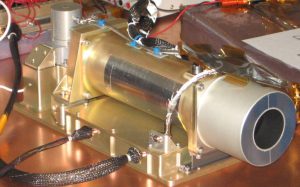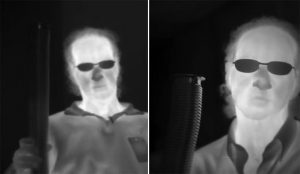
News
NASA to try strained-layer super lattice imagers in space

They are based on earlier ‘quantum well infrared photodetectors’ (QWIPs) that are flying on Landsat 8, and will be flying Landsat 9, which monitor vegetation from space.
SLS imaging arrays are fabricated on a semiconductor wafer, using hundreds of alternating epitaxially layers tuned to absorb infrared photons and convert them into electrons, according to NASA. A read-out chip is directly mated to the array.
SLS detectors are 10x more sensitive than QWIMPs, operate over a broader spectral range and, importantly operate at 70K instead of 42K for QWIPs.
 Resolution of SLS detector array (right) compared warlier QWIP
Resolution of SLS detector array (right) compared warlier QWIP
It consumes little power, operates at liquid-nitrogen temperatures, is easily fabricated, and is inexpensive “almost to the point of being disposable,” said NASA detector engineer Murzy Jhabvala of the Goddard Space Flight Center, who worked with New Hampshire-based QmagiQ to create a practical SLS detector assembly – shown – which is ~400mm long and 150mm high.
The Goddard Detector Development Laboratory recently fabricated a 1,024 x 1,024 sensor, and it working on a 2,048 x 2,048 array.
For testing, the detector pictured will hitchhike on the next SpaceX Dragon robotic refuelling mission to the International Space Station, in a package called the Compact Thermal Imager which will image and measure fires, ice sheets, glaciers, and snow surface temperatures, as well as measuring the transfer of water from soil and plants into the atmosphere – important for understanding plant growth, according to NASA.
This testing is part of a plan to raise SLS to ‘technology-readiness level’ nine (TRL-9) – meaning that it has flown and operated well in space. “This is a very important technology milestone,” said Jhabvala. “We needed this mission. When we demonstrate our detector array, multiple copies can be made, assembled, and aligned into focal plane arrays that would allow us to image large swaths of Earth’s surface from space in the future.”
CTI will also carry the Goddard-developed ‘SpaceCube 2.0’, a hybrid computer that will control the instrument and process images and video.